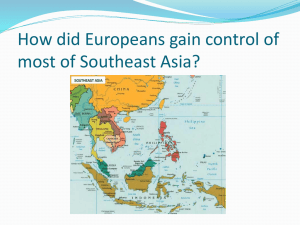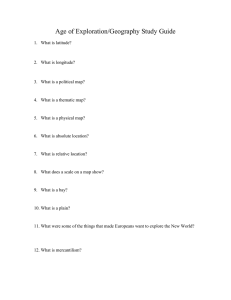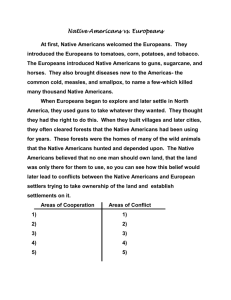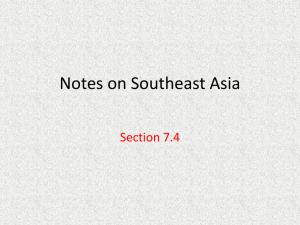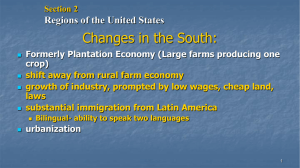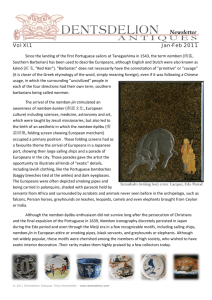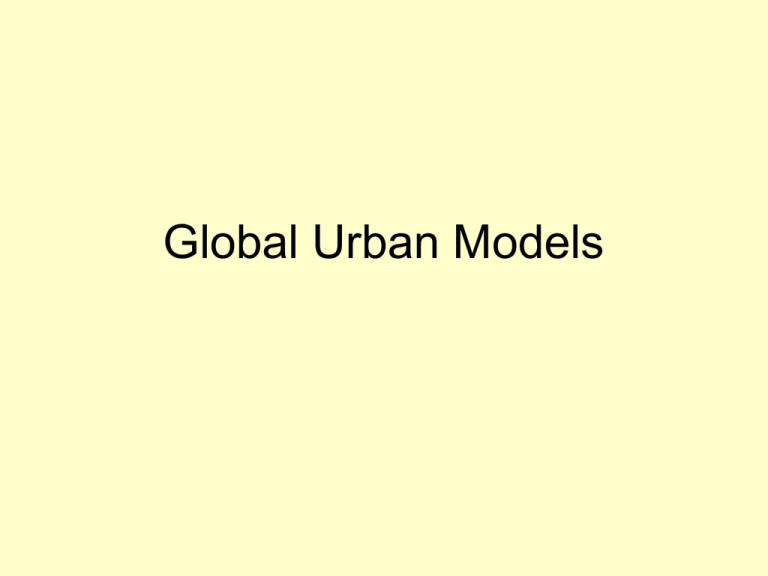
Global Urban Models
Modeling the Cities of the Global
Periphery and Semiperiphery
• Latin American City (Griffin-Ford model)
• African City (de Blij model)
• Southeast Asian City (McGee model)
Latin
American
City
(GriffinFord
model)
In Situ accretion: where
less expensive homes and
businesses seem to be in a
chronic state of ongoing
construction and renovation
Buenos Aires, Argentina
Disamenity sector – very poorest parts of the city
eg. the favelas of Rio de Janeiro, Brazil
The African
City
(de Blij
model)
North African cities
Muslim influences.
Sub-Saharan major
cities developed by
European colonizers
deBlij North African City Model
•
•
•
•
Mosque in center
Has open air markets
Walled cities
Courtyards with high walls for each family
compound
Somalia
Tripoli, Libya
Biggest City:
Swaziland
Tunisia
Southeast
Asian City
(McGee
model)
Most major Asian cities
developed by European
colonizers on ports.
Alien commercial –
typically Chinese & Indian
© 2012 John Wiley & Sons, Inc. All rights reserved.
• Which of the following is most likely to
have a large religious building and a
market bazaar at its center?
1.
2.
3.
4.
A traditional city in Northern Africa
A post-colonial city in SubSaharan Africa
A colonial-based city in Southeast Asia
A modern city on the west coast of the
United States
5. A manufacturing city in Western Europe
• Which of the following is most likely to
have a large religious building and a
market bazaar at its center?
1.
2.
3.
4.
A traditional city in Northern Africa
A post-colonial city in SubSaharan Africa
A colonial-based city in Southeast Asia
A modern city on the west coast of the
United States
5. A manufacturing city in Western Europe
Colonial
City
Fort
European
Town
Native
town
Middle East City Model
Medina
The main street
Middle East
Urban Model
Tunis: Nasr
Tunis: Lafayette
neighborhood
European Model
Eastern
European City
Budapest,
Hungary
European Cities:
result of very long histories
Complex street patterns - prior to automobile, weird angles
Plazas and Squares - from Greek, Roman, Medieval
High density and compact form - wall around city or low-growth
zoning
Low skylines - many built before elevators, others required cathedral or
monument to be highest structure
Lively downtowns - center of social life, not just office work
Neighborhood stability - Europeans moved less frequently than we
do.
Scars of War - many wars , many cities originally defensive
Symbolism - gothic cathedrals, palaces, and castles
Municipal Socialism - many residents live in buildings that are owned
by city gov’t. Some of these are massive housing projects, others small
scale apartment buildings.
Western
European City
Europe versus U.S. Cities: Sprawl
European cities, including this hypothetical U.K. example, tend
to restrict suburban development, thereby concentrating new
development in and around existing concentrations. This leaves
large rings of open space, so-called greenbelts.
What are the social costs of sprawl?
• One major difference between land use in
European and US cities is that
1. European cities usually have more
dispersed populations that US cities
2. Europeans cities are less likely to have large
urban parks than US cities
3. European cities are less likely to have ring
roads than US cities
4. European suburbs are less likely to have
high crime rates than US suburbs
5. Wealthy Europeans are more likely than
wealthy Americans to live close to center city
• One major difference between land use in
European and US cities is that
1. European cities usually have more
dispersed populations that US cities
2. Europeans cities are less likely to have large
urban parks than US cities
3. European cities are less likely to have ring
roads than US cities
4. European suburbs are less likely to have
high crime rates than US suburbs
5. Wealthy Europeans are more likely than
wealthy Americans to live close to center city
Toulouse, France
Narrow, Twisty
Medieval Streets
Vienna, Austria
Ferrara, Italy
Sogne, Norway
Venice, Italy
Toledo
Somewhere in France
Amsterdam, The Netherlands
Florence, Italy
Copenhagen, Denmark

